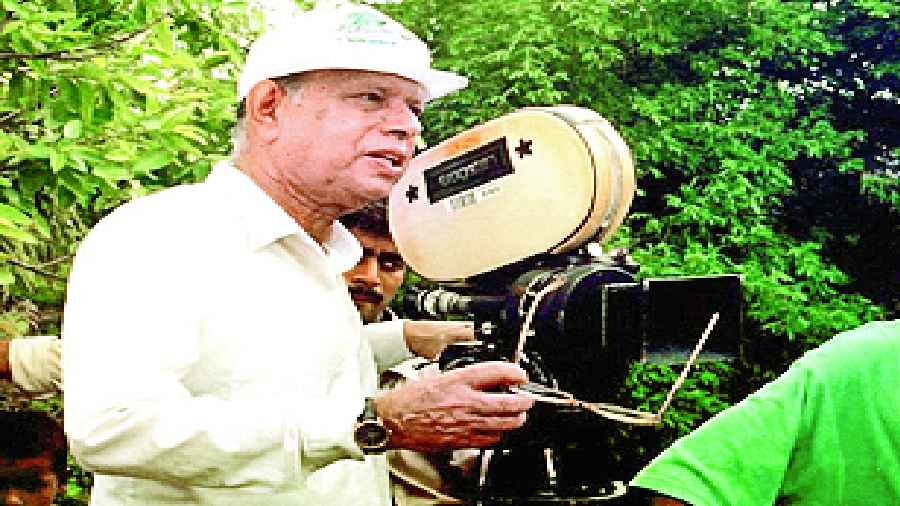Book: The Cinema of Tapan Sinha: An Introduction
Author: Amitava Nag
Publisher: Om
Price: Rs 395
Soumitra Chatterjee, who acted in several successful films directed by Tapan Sinha, is on record saying, “Tapan Sinha started off within typical mainstream cinema because he believed in making the audience happy and making good the producer’s money... But his dedication to serious cinema made him experiment constantly in his films... From a very modest beginning as a commercial filmmaker he grew into a serious director...”
There is much truth in what Chatterjee said about Sinha’s evolution from a successful mainstream director to an artist with more serious creative ambitions. It is a mystery how this fact escaped the notice of the film pundits of the time. It is only now, years after the director’s death, that some critics and film historians are waking up to the injustice that Tapan Sinha had to face, arguably due to political differences with powerful elements harbouring rigid, doctrinaire tendencies. In this book, Amitava Nag has made a brave attempt to undo the damage.
Although some serious writing on Sinha’s oeuvre exists in Bengali, Nag’s informative and enjoyable introduction is the first of its kind in English. Spiced with anecdotes and real-life narratives, the introduction ably expresses the poetics and politics of Sinha, who appears to have carried within him a life-long, strong Tagorean influence. The book may be of interest to viewers and critics in both Bengal and other parts of the country where the director’s name is not exactly unknown. Having made films in both Bengali and Hindi, at times with thespians of the stature of Ashok Kumar, Dilip Kumar, Pankaj Kapoor, Amol Palekar, Shabana Azmi and Tanuja, Tapan Sinha’s admirers were, and are, to be found on a pan-Indian scale.
However, it was the misfortune of this gifted and principled gentleman of the old school that while well-known actors in Mumbai or Delhi praised such works of excellence as Ek Doctor ki Maut or Aadmi aur Aurat, all that one heard in certain quarters in Calcutta was the sound of orchestrated silence. In this context, the role of the film society movement in the 1980s and 1990s needs to be examined with severity. It is common knowledge that many of the know-alls of the movement, aligned to Big Brother, would go out of their way to underrate or even dismiss Sinha’s films. One still remembers with dismay the manner in which an honest and credible narration of individual courage in the face of organized political violence in Atanka (1986) was sought to be erased by the powers-that-be.
The blurb of Nag’s book is not far off the mark when it says: “Most serious discussions on Bengali cinema start and end with the holy trinity of Satyajit Ray, Ritwik Ghatak and Mrinal Sen. However, no other film-maker in Bengali cinema has bridged the world of high art with box-office success like Tapan Sinha.” The truth of the observation is proved, on the one hand, by the overwhelming commercial success of Banchharamer Bagan (1980), which satirized upper-class greed, and, on the other hand, by the moving social critique of Aadmi aur Aurat (1982), which came in for praise from Satyajit Ray who thought it to be Sinha’s best film.
The pain that Amitava Nag has taken to evaluate Tapan Sinha as a man, a citizen, and an artist is clearly visible. The introduction to Sinha’s social philosophy and artistic sensibility contained in the near-consistent, high quality body of work produced over a period of several decades may help open many eyes which had previously been kept shut, inadvertently or otherwise.











